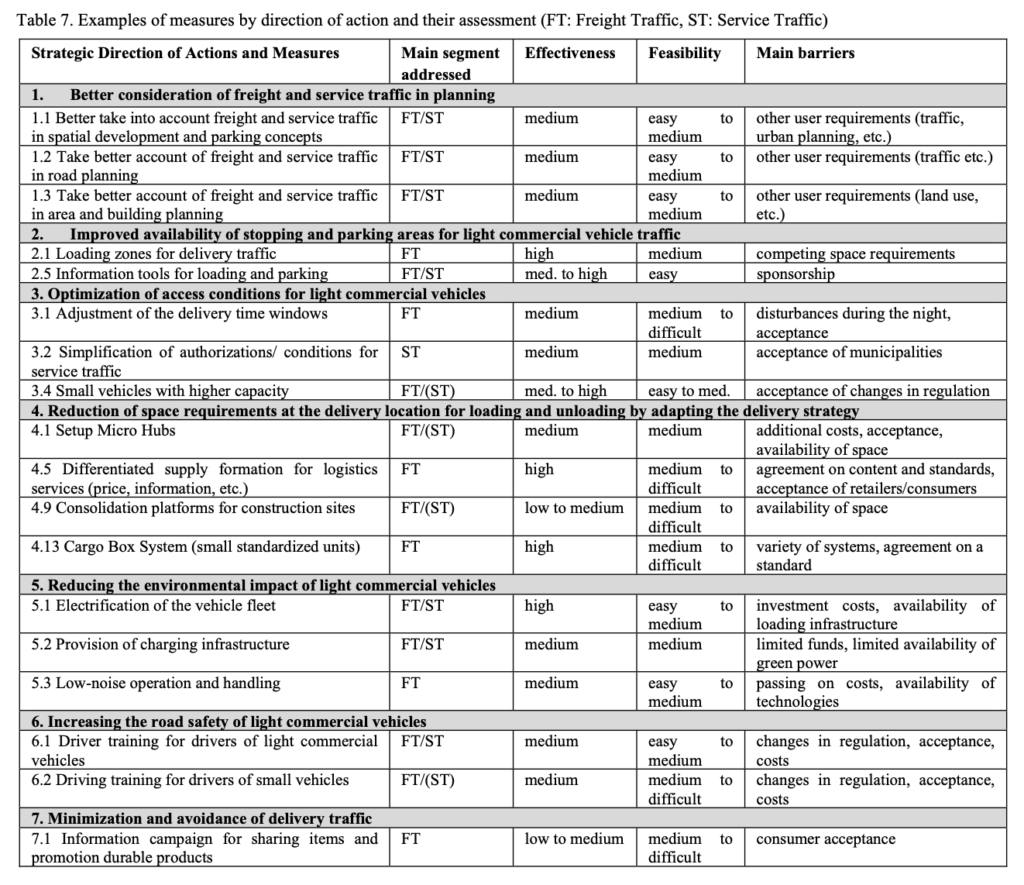Freight transport using light commercial vehicles in Switzerland is increasing at a faster rate than overall freight transport. A 2023 study examined the role of various types of light vehicles in commercial traffic, identified and evaluated operational patterns across freight and service transport segments, highlighted key areas of conflict, and assessed potential future developments and their implications for the use of light commercial vehicles.

Figure: Segmentation of delivery traffic
The findings indicate that van usage differs according to the logistics sector, type of cargo, and industry. Key challenges in commercial transport involving light vehicles include congestion, limited space for loading, unloading, and parking, safety issues, and emissions. Both the number of stops and the distance traveled by light commercial vehicles are expected to grow significantly, although the effects of current trends appear to be limited.
Addressing the challenges in freight and service transport with light commercial vehicles requires tailored measures for each specific segment. The study outlines seven strategic directions and recommends practical actions to improve conditions for freight and service transport.
Lordieck et al. identify seven strategic directions and propose concrete actions to improve conditions for freight and service traffic involving light commercial vehicles:
- Better consideration of freight and service traffic in urban planning
- Improved availability of stopping and parking areas for light commercial vehicle traffic
- Optimization of access conditions for light commercial vehicles
- Reduction of space requirements at the delivery location for loading and unloading by adapting the delivery strategy
- Reducing the environmental impact of light commercial vehicles
- Increasing the road safety of light commercial vehicles
- Minimization and avoidance of delivery traffic.

